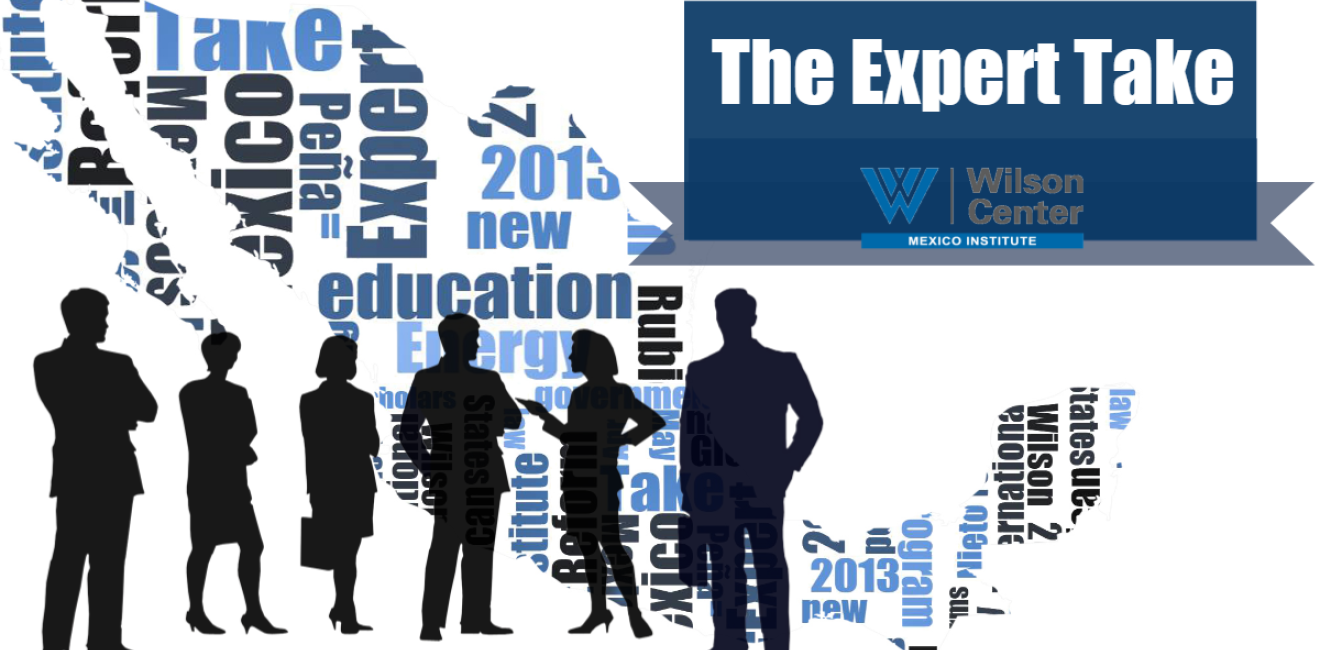Long before the COVID-19 pandemic came along, it was clear that North America and Mexico were suffering from alarming “gaps” and “mismatches” between the skills of workers available and the jobs needing to be filled.
The result was that the economic performance of all three countries — Mexico, the United States and Canada — fell short of the potential for North America’s robust production and supply networks.
The accelerating technological changes of what is often called the “Fourth Industrial Revolution” were feeding the mismatches between skills needed and workers available.
New technologies, work process changes, software improvements and other innovations were sweeping through workplaces across the continent, eliminating, redefining and creating jobs.
These transformations generated demands for learning new skills, for retraining existing workers and managers, and for new skills required of incoming workers.
These transformations hold the potential to contribute to more and better jobs in the future. But individuals, companies, schools and governments must prepare for the shocks accompanying the “creative destruction” ahead.
Social, economic and political disruptions, fostered by poor policies and practices to manage the changes, have already had major impact in the United States and elsewhere.
For these reasons, I undertook at two-year effort to examine the problems and explore positive ways forward on workforce development issues for North American cooperation in a report published by the Woodrow Wilson Center in December 2019.
The report includes a detailed set of recommendations for U.S.-Mexico-Canada cooperation.
Effects of the Pandemic
The COVID-19 pandemic appears to be accelerating workplace changes that were already occurring.
Technology’s impact the workforce does not progress at a regular pace. Studies indicate that automation often proceeds in bursts, spurred forward by economic crises, for example, when humans become relatively more expensive as business revenues decline.
According to two studies of recent recessions, employers shed less-skilled workers and replaced them with technology and higher-skilled workers. This poses society-wide public policy problems for governments, exemplified by increased unemployment, and for businesses, which must find workers with the skills needed, whether via retraining or new hires.
As we have seen, this mix of events has led to serious social and political debate and public policy challenges.
To add to the complexity, automation rarely replaces entire classes of occupations. Rather only parts of the old job are done with automation and the worker requires new, often digital, skills. These changes often deliver very
different impacts to different geographic regions and to different business sectors.
A 2020 McKinsey Global Institute study about the future of work in Europe found a large overlap (about 24 million jobs) of those who face job loss risk because of automation and those who face possible job loss because of the covid-19 economic recession.
McKinsey’s study found that the top job sectors which face losses from both automation and covid-19 in Europe are: 1) wholesale and retail; 2) manufacturing; 3) accommodation and food services; 4) construction; 5) transportation and storage; and 6) human health and social work.
I suspect we will find similar trends in North America as we emerge from the economic downturn sparked by the pandemic.
A recent Brookings Institution article reports that, for the United States, some 36 million jobs have a “high” susceptibility to automation and argues that any economic downturn is likely to bring “a new bout of structural change in the labor market and its demand for skills.”
From the perspective of North American commerce, as the economies emerge from the pandemic, we may well see significant changes, including:
- more use of technology in production and in supply chains;
- more use of the internet for commerce;
- more cross border data flows to help manage business;
- more management of different processes from afar;
- more provision of services via internet; and
- more need for new and higher-level skills among workers.
What needs to be done? A lot.
Companies need to build workforce development more robustly into their business models. Businesses should invest in regular mid-career education and skills development programs for existing employees, as well as to develop stronger recruiting programs. This should translate into strong local partnerships with academia and governments.
More broadly, companies, governments and educational institutions need to double down on building strong partnerships aimed at providing skills needed today and for tomorrow.
The most successful examples of collaboration our Wilson Center study found in North America were regional clusters here businesses, academic institutions and state and local authorities worked as partners to provide well-skilled workers.
Queretaro was the case that stood out in Mexico.
In our study, we found that there is a very strong potential role for national and state governments to create the mix of programs and outcomes that will foster good workforces that can meet the skills needs of businesses.
North American Action Agenda
The North American workforce agenda in the Wilson Center study recommends focus on four areas:
- work-based learning, such as apprenticeships, that meet business needs and provide good jobs;
- credentials transparency, where workers can earn credential that are widely accepted and that correctly convey their skills and learning levels;
- labor market data collection and transparency, where governments collect and share data so that individuals, schools and businesses can understand easily labor market signals; and
- “preparing for change” fora, where governments, businesses and academia regularly share best practices and learn from each other how best to meet the pressures of the changing workplace.
Mexico’s Challenges
Before COVID-19, Mexico was already facing a very challenging struggle to give its very promising young people the skills they need to meet marketplace demands.
Mexico had the lowest level of public expenditure on labor market programs as a percentage of GDP among the OECD countries in 2016.
In the 2018 ranking by the Economist Intelligence Unit of readiness for automation, Canada ranked 5, the United States ranked 9 and Mexico ranked 23 out of 25 countries.
OECD reports detail the serious challenges of Mexico’s education system to meet marketplace needs. Sadly, recent government moves to not give encouragement so that the quality concerns are being addressed to meet evolving workplace needs are troubling.
Mexico has some good programs of collaboration between business and education systems, but my strong impression is that these programs need to be expanded and to receive much more investment to succeed.
Sadly, I am not aware of public investment programs that will address well the kinds of challenges that the ‘future of work” discussions identify.
This is particularly disappointing because Mexico has a major opportunity with the July 1 launch of United States-Mexico-Canada Agreement (USMCA) and with companies rethinking their global supply chains as a result of the pandemic.
Within the new USMCA, I would particularly like to note the opportunity to use the newly created Committee on Competitiveness as a forum for the three governments to discuss workforce development challenges, as well as other issues.
Short-term and relatively low-cost efforts in Mexico could include investing in internet training programs that are digitally delivered.
Similarly, focusing on basic digital literacy for high schools and completing plans for reinforced broadband networks in the country are vital steps that the government can take.
Finally, it is essential to build partnerships and coalitions in order to work for the needed changes and programs to support effective skills training and education to address evolving needs.
Mexico, as well as its North American partners, can take more and smarter steps to encourage as the future of work becomes the work of today.
Author

Former Career Ambassador to Afghanistan, Argentina, and Mexico; Distinguished Diplomat in Residence, School of International Service, American University

Mexico Institute
The Mexico Institute seeks to improve understanding, communication, and cooperation between Mexico and the United States by promoting original research, encouraging public discussion, and proposing policy options for enhancing the bilateral relationship. A binational Advisory Board, chaired by Luis Téllez and Earl Anthony Wayne, oversees the work of the Mexico Institute. Read more

Explore More
Browse Insights & Analysis
360° View of How Southeast Asia Can Attract More FDI in Chips and AI



